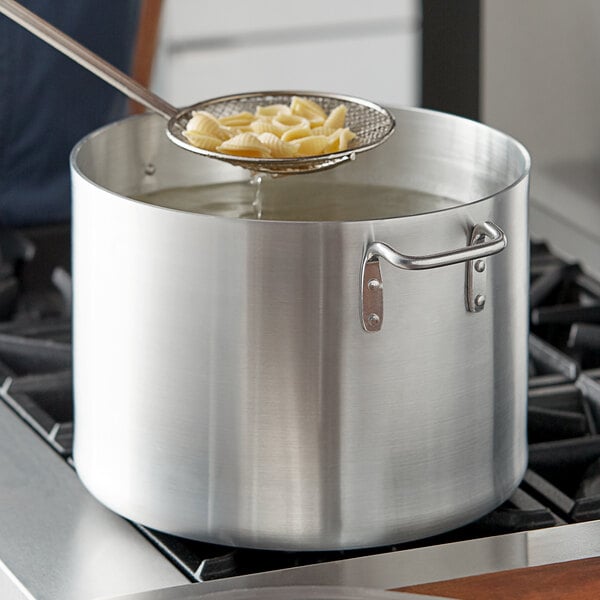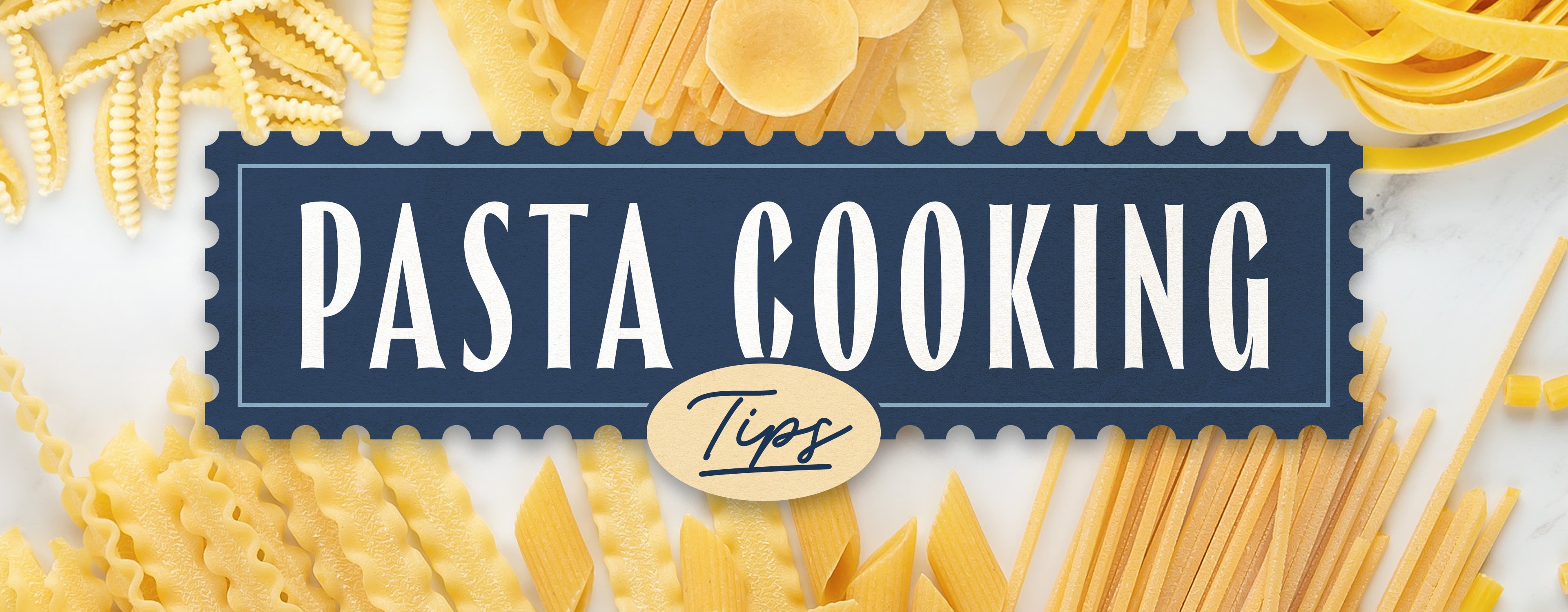Tomatoes are a widely used ingredient in commercial kitchens around the world. With a variety of shapes, sizes, colors, and flavors, tomatoes add depth and complexity to a wide range of culinary creations. Understanding the different types of tomatoes available helps chefs and foodservice professionals choose the best variety for their specific culinary needs. Whether it's adding a pop of color to a salad, enhancing the flavor of a sauce, or creating a visually stunning dish, tomatoes are a versatile ingredient that elevates any menu item.
Shop All Tomatoes
Use these links to learn more about the different types of tomatoes and their features:
Roma Tomatoes
Heirloom Tomatoes
San Marzano Tomatoes
Cherry Tomatoes
Green Tomatoes
Grape Tomatoes
Cocktail Tomatoes
Beefsteak Tomatoes
1. Roma Tomatoes
Roma tomatoes, also known as plum tomatoes, are a popular variety known for their elongated shape and meaty texture. These tomatoes are commonly used in commercial kitchens due to their low moisture content and rich flavor profile. When selecting Roma tomatoes for commercial use, look for fruits that are firm and free of blemishes. Their deep red color should be uniform, indicating ripeness and flavor.
Roma Tomato Flavor - One of the key characteristics of Roma tomatoes is their balanced flavor profile, which combines sweetness with a subtle tangy undertone. Whether roasted, grilled, or blended into a sauce, Roma tomatoes bring a depth of flavor that elevates the taste of any dish they are added to. Their robust flavor makes them a go-to choice for chefs looking to create rich, savory dishes that are sure to impress diners.
Roma Tomato Uses - These tomatoes are known for their firm texture, low seed count, and rich flavor, making them a versatile ingredient in various dishes. Roma tomatoes can be used to make sauces, salsas, and dips, or they can be used as a topping to add freshness and juiciness to sandwiches, wraps, and burgers.
What Do Roma Tomatoes Look Like? - Roma tomatoes are usually smaller than traditional round tomatoes, ranging in size from 2 to 3 inches in length. These tomatoes typically have a cylindrical or oval shape with few seeds and thick flesh. Their skin is smooth and firm, with a bright red color when ripe.
2. Heirloom Tomatoes
Heirloom tomatoes are valued for their ability to enhance the quality and taste of dishes. Heirloom tomatoes are unique for their open-pollination growth technique, meaning they rely on natural pollination of seeds to create a generational product over time, without any human intervention in the seed selection process. This process imparts the flavors of the geographical region into the final product, resulting in a unique taste. Chefs often incorporate heirloom tomatoes into their menus to add a gourmet touch and showcase seasonal ingredients. Whether used in sandwiches, pasta dishes, or as a colorful garnish, heirloom tomatoes bring a depth of flavor that is unmatched by conventional varieties.
Heirloom Tomato Flavor - Heirloom tomatoes come in a wide range of flavors, from sweet and mild to tangy and robust. This diversity is due to the numerous heirloom cultivars that have been preserved and passed down through generations. Their complex taste often includes hints of acidity, sweetness, and umami, creating a truly memorable culinary experience.
Heirloom Tomato Uses - From fresh salads and sandwiches to cooked dishes like sauces, soups, and roasted vegetable medleys, these tomatoes can be used in a multitude of ways to enhance the flavor and texture of a dish. Whether sliced and added to salads, used as a topping on pizzas, or incorporated into sauces and salsas, heirloom tomatoes add a pop of color to a wide range of dishes, enhancing their presentation and overall appeal.
What Do Heirloom Tomatoes Look Like? - Heirloom tomatoes come in a variety of shapes, including round, oblong, pear-shaped, and even ribbed. Some heirloom varieties may have irregular or bumpy surfaces, adding to their distinctive look. The sizes of heirloom tomatoes can also vary significantly, ranging from small cherry tomatoes to large beefsteak varieties.
3. San Marzano Tomatoes
Originally hailing from the Campania region of Italy, San Marzano tomatoes are prized by chefs and home cooks alike for their exceptional taste and low acidity. One key feature of San Marzano tomatoes is their elongated shape and thick flesh, which gives them a meaty texture ideal for cooking down into a smooth sauce. Their vibrant red color and sweet, slightly tangy flavor make them a standout ingredient in traditional Italian dishes such as marinara sauce, pizza margherita, and pasta alla puttanesca.
San Marzano Tomato Flavor - One of the key factors contributing to the unique flavor of San Marzano tomatoes is their high sugar content. This natural sweetness is balanced by a subtle tanginess, resulting in a well-rounded flavor that is both savory and slightly acidic. In addition to their delicious taste, San Marzano tomatoes are also prized for their intense aroma, which adds another dimension to their overall flavor profile.
San Marzano Tomato Uses - One of the primary uses of San Marzano tomatoes is in sauces and purees. The naturally sweet flavor and low acidity of these tomatoes enhance the taste of sauces, whether it's a classic marinara sauce, pizza sauce, or a rich tomato-based pasta sauce. In addition to sauces, San Marzano tomatoes are also commonly used in soups and stews. Their firm texture and meaty flesh hold up well during cooking, adding body and depth to dishes like minestrone, tomato basil soup, or hearty vegetable stews.
What Do San Marzano Tomatoes Look Like? - One of the key visual characteristics of San Marzano tomatoes is their elongated shape, which sets them apart from round tomatoes. The skin of these tomatoes is smooth and taut, with a glossy texture that enhances their visual appeal. In terms of size, San Marzano tomatoes are medium to large, with an average length of about 3 to 4 inches.
4. Cherry Tomatoes
Cherry tomatoes are a popular variety of small, bite-sized tomatoes that are known for their sweet and tangy flavor profile. These miniature tomatoes are typically round or oval in shape and range in size from the diameter of a cherry to that of a golf ball. Cherry tomatoes are a versatile ingredient that can be used in a variety of culinary applications, making them a favorite among chefs and home cooks alike.
Cherry Tomato Flavor - Cherry tomatoes are characterized by their juicy texture and vibrant taste, which adds a burst of freshness to dishes. The balance of sweetness and acidity in cherry tomatoes makes them a favorite among chefs for enhancing the overall flavor profile of salads, salsas, and sauces. Their intense flavor also makes them a standout choice for roasting, grilling, or simply enjoying raw as a snack.
Cherry Tomato Uses - Cherry tomatoes' bright red, yellow, or orange hues add a pop of color to salads, pasta dishes, and appetizers, making them an attractive garnish or focal point on the plate. Due to their robust flavor and small size, cherry tomatoes are often used in dishes where a concentrated burst of tomato flavor is desired. Whether diced and added to bruschetta, halved and tossed in a stir-fry, or roasted and blended into a creamy soup, cherry tomatoes offer a delightful burst of sweetness and acidity that elevates the overall taste experience.
What Do Cherry Tomatoes Look Like? - These miniature tomatoes typically measure around 1 inch in diameter and are known for their round or slightly oblong shape. Cherry tomatoes come in a variety of colors, including red, yellow, orange, green, and even purple. Their smooth, glossy skin is thin and delicate, making them perfect for snacking or adding to salads and other dishes.
5. Green Tomatoes
Green tomatoes are unripe tomatoes that have not yet reached their full maturity. They are typically harvested when they are still green in color and firm to the touch. While most people are familiar with ripe red tomatoes, green tomatoes have their own unique qualities and culinary uses.
Green Tomato Flavor - Green tomatoes, known for their unique flavor profile, offer a tangy and slightly sour taste that sets them apart from their ripe, red counterparts. This distinct flavor is a result of the higher levels of acidity present in green tomatoes compared to fully ripened ones. Green tomatoes also tend to have a firmer texture, making them ideal for dishes where you want to maintain a bit of crunch.
Green Tomato Uses - The tangy and slightly sour flavor of green tomatoes makes them a popular choice for pickling and frying. When pickled, green tomatoes develop a zesty and vinegary taste that pairs well with sandwiches, burgers, and salads. Fried green tomatoes, a Southern delicacy, showcase the tangy flavor of the unripe fruit while adding a crispy coating for a delightful contrast in texture.
What Do Green Tomatoes Look Like? - They are typically firm to the touch and have a slightly tangy flavor compared to their ripe, red counterparts. Green tomatoes can vary in shade from a light green to a deep, vibrant green, depending on the variety.
6. Grape Tomatoes
Grape tomatoes are a popular variety of small tomatoes that are known for their sweet flavor and firm texture. While they may be small in size, grape tomatoes pack a powerful punch when it comes to taste and versatility in culinary applications.
Grape Tomato Flavor - Grape tomatoes are characterized by their sweet and tangy flavor, which sets them apart from other tomato varieties. Their taste is often described as intensely sweet with a hint of tartness, creating a well-balanced flavor that appeals to many palates.
Grape Tomato Uses - In addition to their flavor, grape tomatoes are also prized for their firm texture and juiciness. This combination of taste and texture makes them ideal for fresh applications where their flavor can shine, such as in bruschetta, caprese salads, or as a topping for pizzas and sandwiches. They can also be roasted or grilled to enhance their natural sugars and create a caramelized depth of flavor.
What Do Grape Tomatoes Look Like? - These tomatoes are typically oval or oblong in shape, resembling a small grape, which is where they get their name from. The skin of grape tomatoes is smooth and glossy, giving them an attractive appearance when used in dishes.
Grape Tomatoes vs Cherry Tomatoes
Grape tomatoes are smaller than traditional round tomatoes, measuring about half the size of a cherry tomato. They also have a firmer texture and a thicker skin compared to cherry tomatoes, making them ideal for salads, garnishes, and snacking. Cherry tomatoes have a more acidic taste than grape tomatoes, which can add a tangy kick to a variety of dishes.
7. Cocktail Tomatoes
Cocktail tomatoes are a popular variety of tomatoes that are smaller in size compared to traditional tomatoes. Due to their small size and quick ripening process, cocktail tomatoes are easy to grow and maintain, making them a popular choice for commercial growers and chefs looking to incorporate fresh, flavorful ingredients into their menus.
Cocktail Tomato Flavor - The flavor of cocktail tomatoes varies depending on the specific variety. Some cocktail tomatoes have a more pronounced sweetness, while others may have a slightly more acidic taste. Regardless of the variety, cocktail tomatoes are generally known for their bold and vibrant flavor that enhances the dishes they are used in.
Cocktail Tomato Uses - Cocktail tomatoes are ideal for creating flavorful sauces, marinades, and dressings. Their concentrated taste adds depth to dishes such as pasta sauces, soups, and roasted vegetables. Additionally, the small size and natural sweetness of cocktail tomatoes make them perfect for adding some extra flavor and visual appeal to salads and charcuterie boards
What Do Cocktail Tomatoes Look Like? - Cocktail tomatoes are small, bite-sized tomatoes that are popular for their sweet flavor and vibrant colors. These tomatoes typically range in size from about 1-2 inches in diameter, making them perfect for snacking, salads, and garnishes.
Cocktail Tomatoes vs Cherry Tomatoes
The main difference between the two types of tomatoes is cocktail tomatoes are larger and firmer with a sweet and tangy flavor. Cherry tomatoes are smaller, juicier, and sweeter, but both varieties offer unique characteristics that cater to different culinary needs and preferences.
8. Beefsteak Tomatoes
Beefsteak tomatoes typically have a meaty texture with relatively few seeds and are known for their large size. These tomatoes have a rich, sweet flavor with a subtle acidity, making them perfect for adding depth to dishes.
Beefsteak Tomato Flavor - The flavor of beefsteak tomatoes is often described as full-bodied and slightly tangy, with a perfect balance of sweetness and acidity. In addition to their delicious flavor, beefsteak tomatoes also offer a juicy and succulent texture that adds a refreshing element to dishes. When ripe, these tomatoes are firm yet tender, with a juicy interior that explodes with flavor with each bite.
Beefsteak Tomato Uses - Beefsteak tomatoes typically have a meaty texture with relatively few seeds, making them ideal for use in sandwiches, salads, and burgers. Their thick flesh also makes them suitable for grilling, roasting, and sauteing, as they hold their shape well during cooking. Due to their large size, beefsteak tomatoes are a popular choice for stuffing with fillings such as grains, cheese, or meats.
What Do Beefsteak Tomatoes Look Like? - These tomatoes are typically round and can weigh anywhere from one to two pounds each. Their smooth skin is a vibrant red color when ripe, and they have a juicy interior with fewer seeds compared to other tomato varieties. The flesh of beefsteak tomatoes is meaty and dense, making them perfect for slicing and layering in sandwiches or salads.
Whether you are looking to add more color to your dishes with the vibrant hues of heirloom tomatoes or seeking a meaty texture for sandwiches and burgers with beefsteak tomatoes, there is a tomato variety for every application. With a wide range of flavors, sizes, shapes, and textures, tomatoes are not only a versatile ingredient but also a nutritious addition to any menu. Experimenting with different types of tomatoes opens up a world of possibilities in the kitchen, allowing chefs to create innovative and delicious dishes that cater to diverse palates and preferences.






